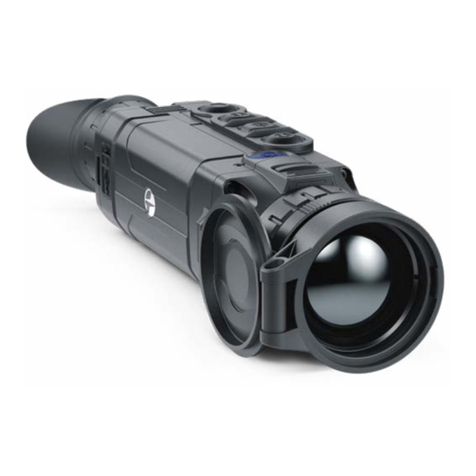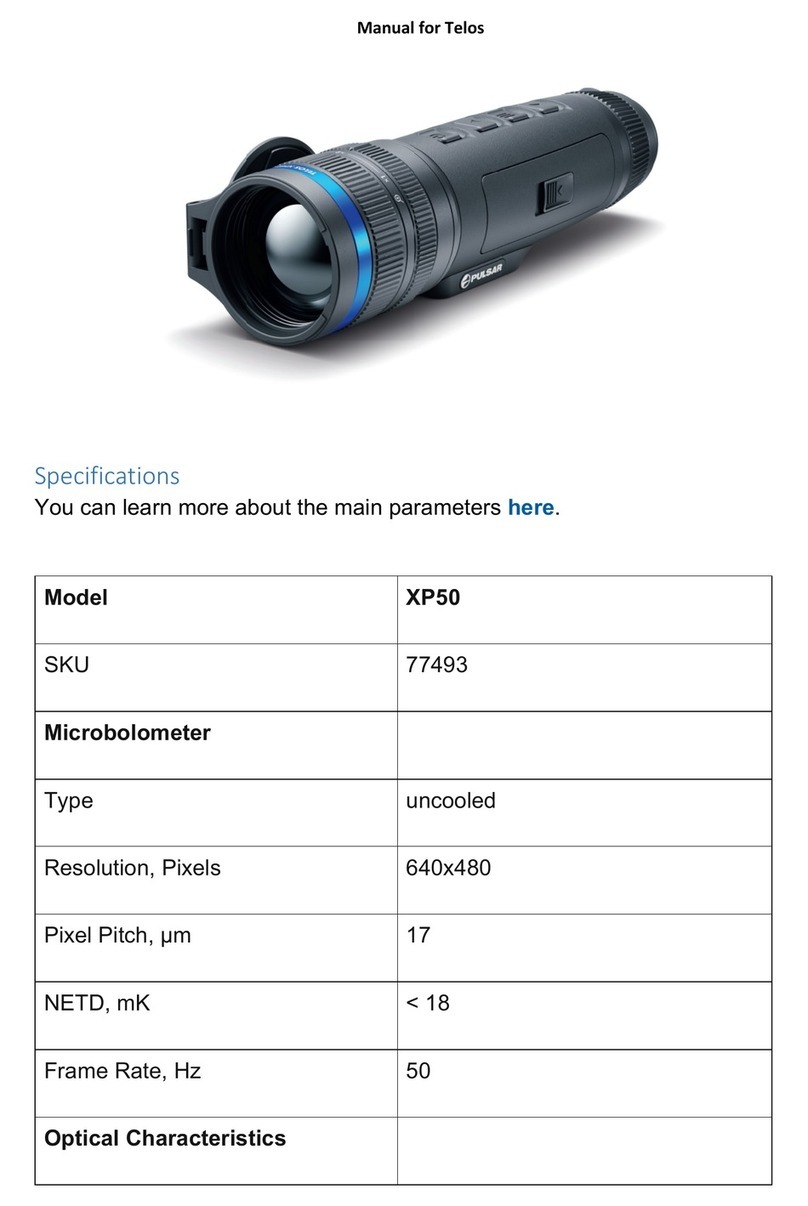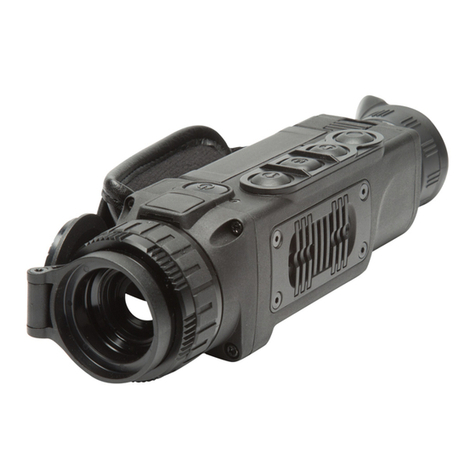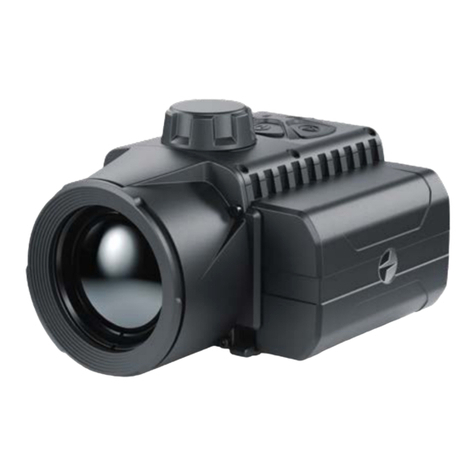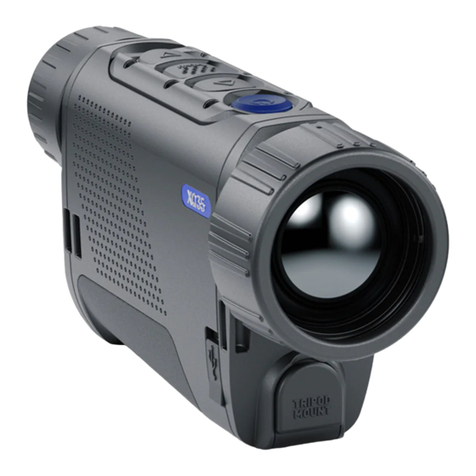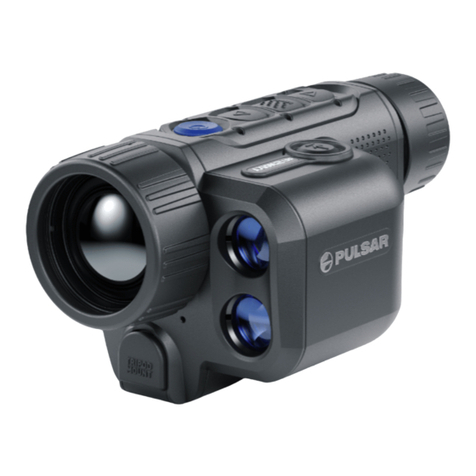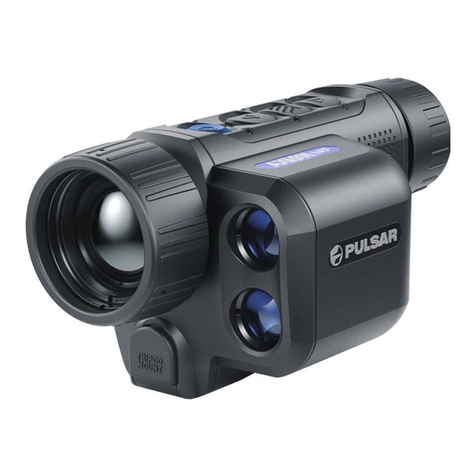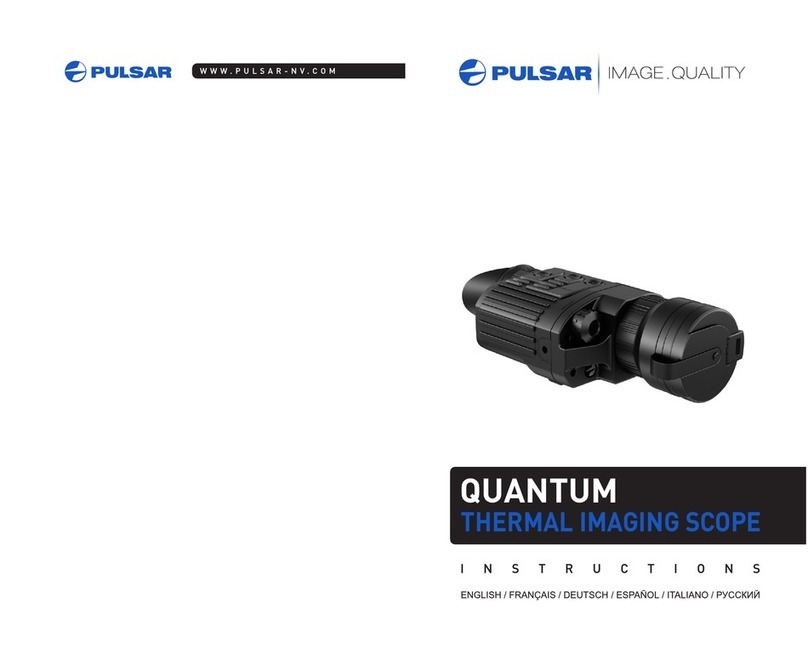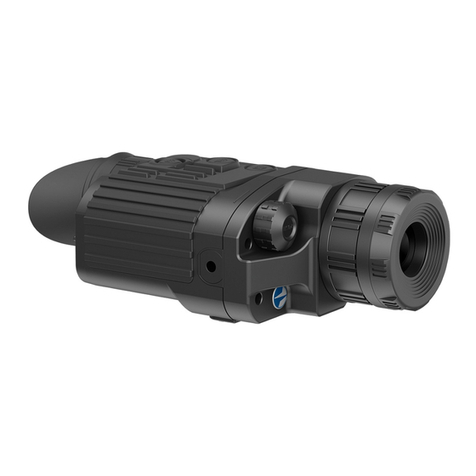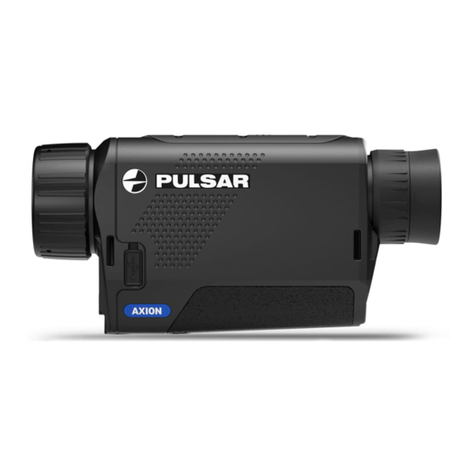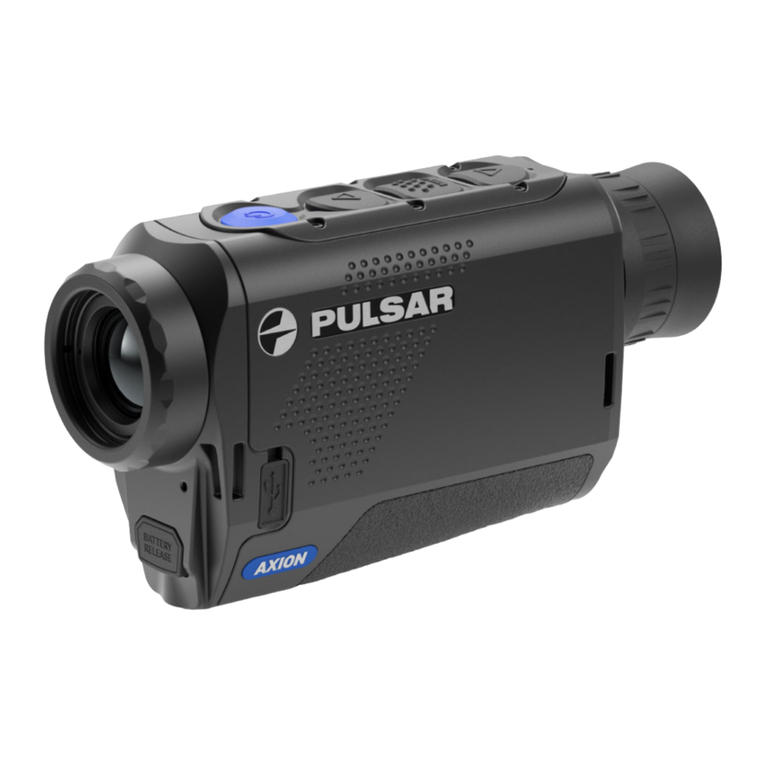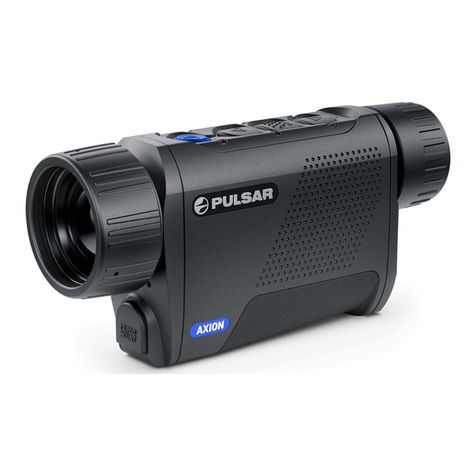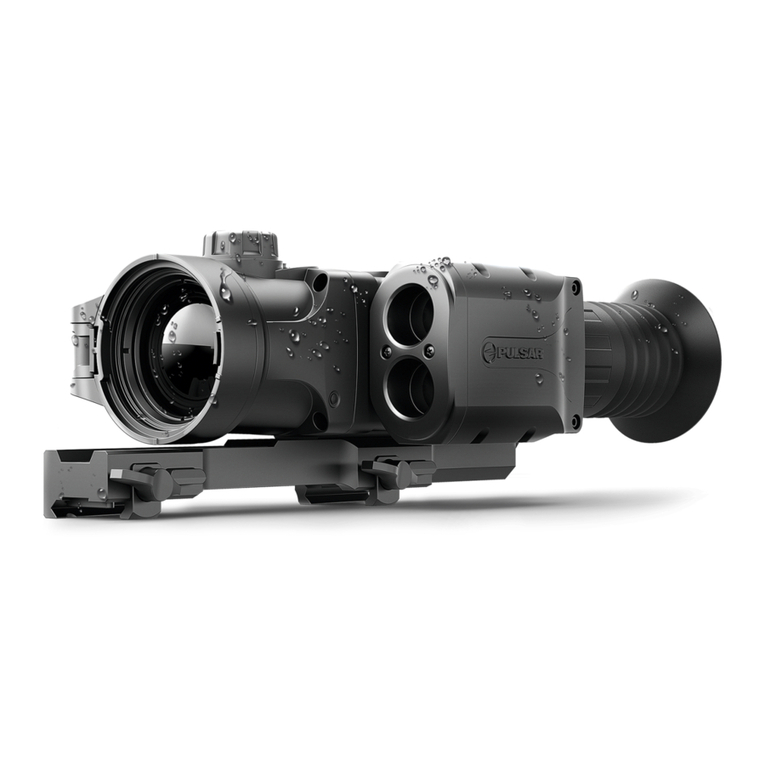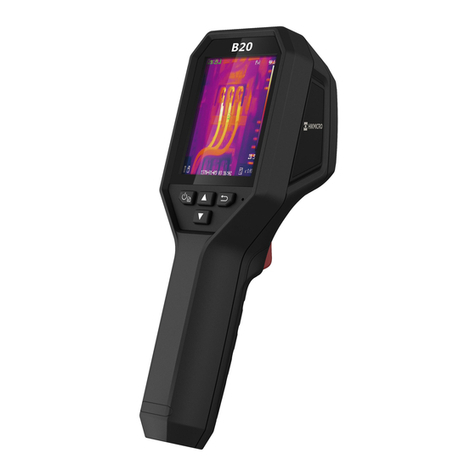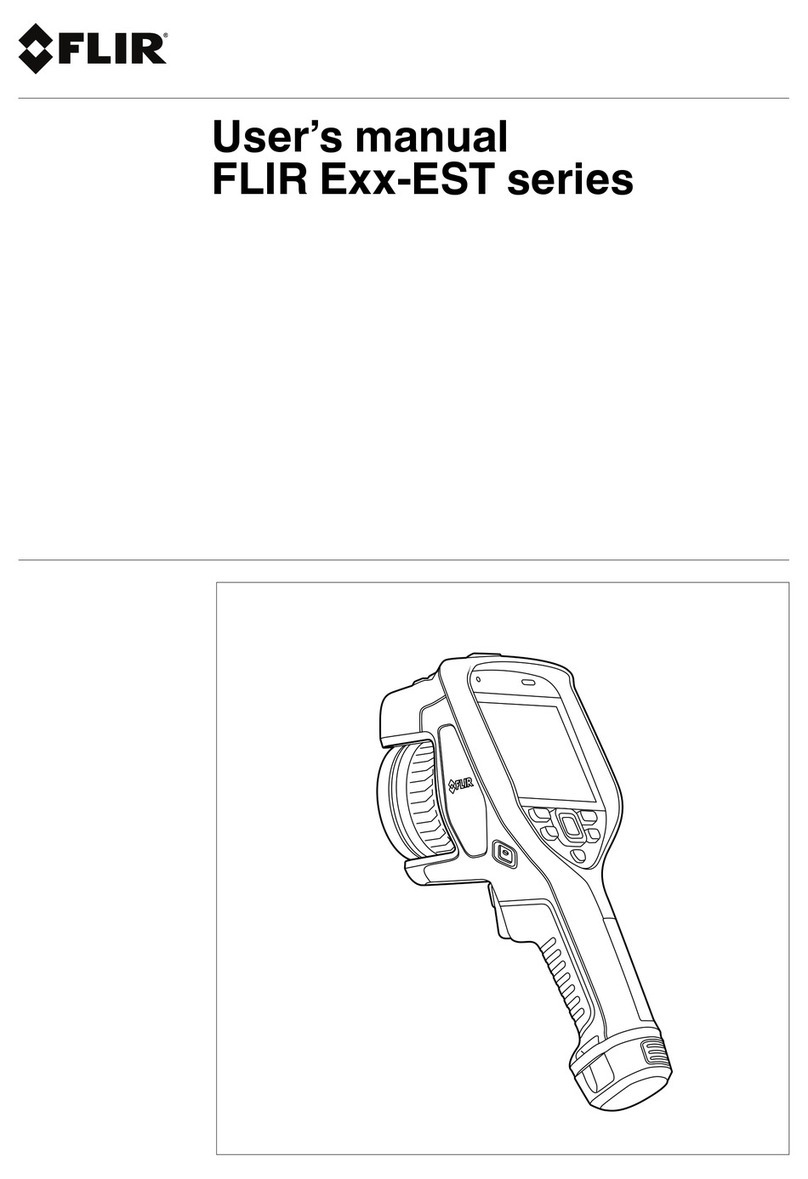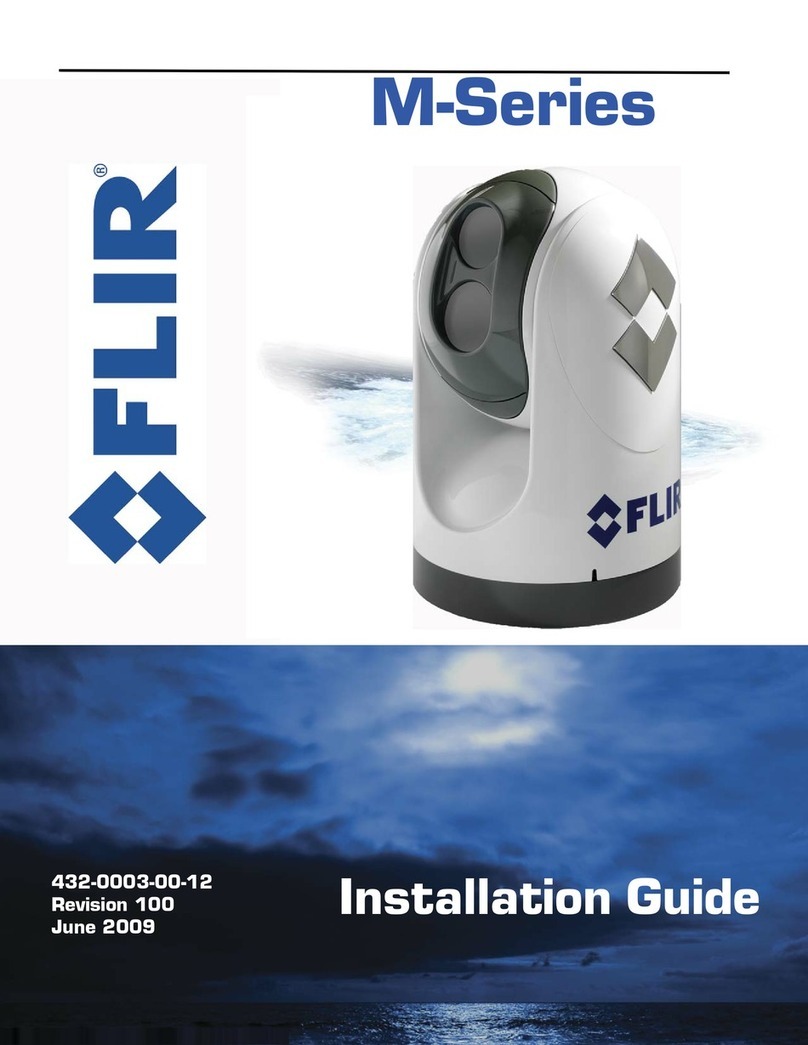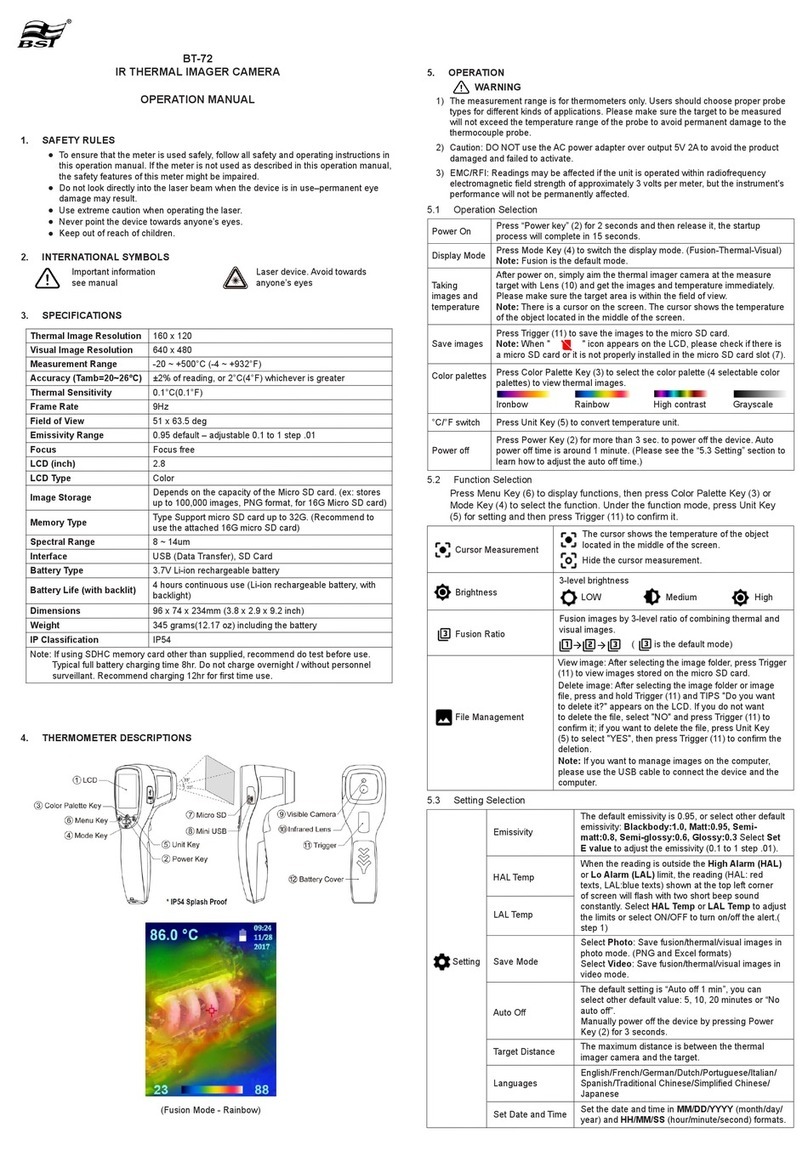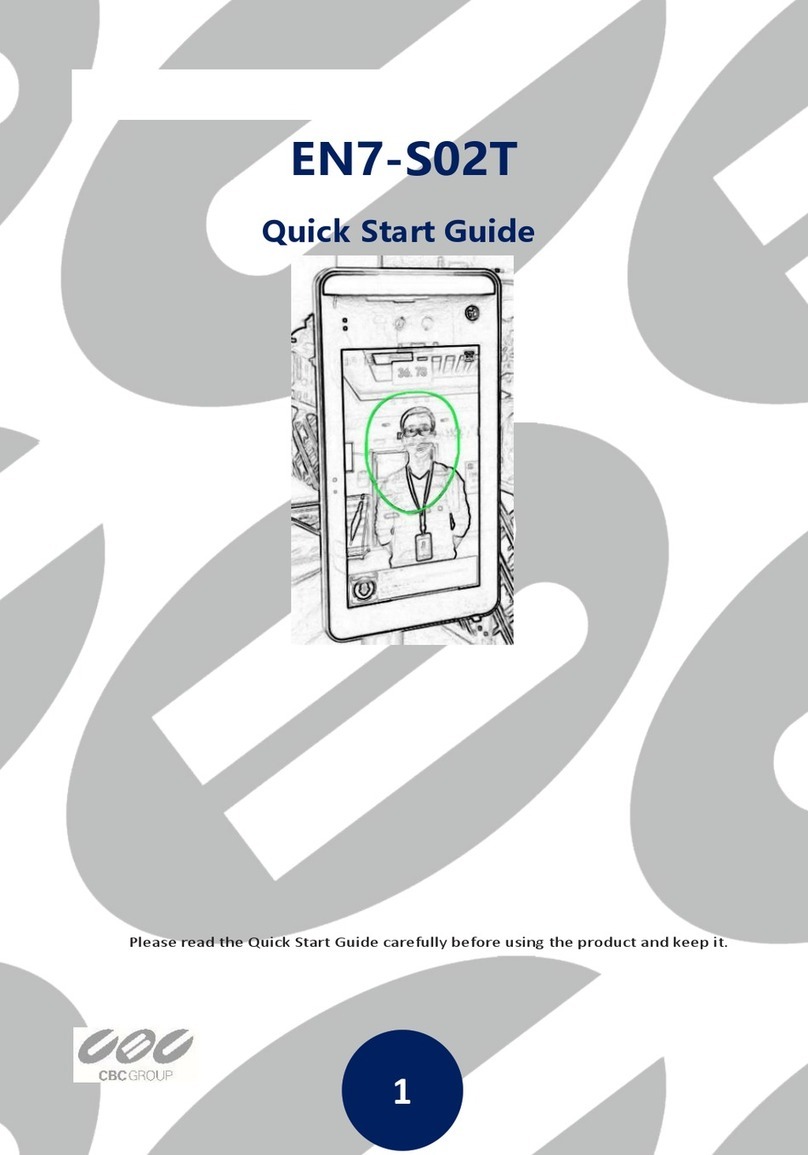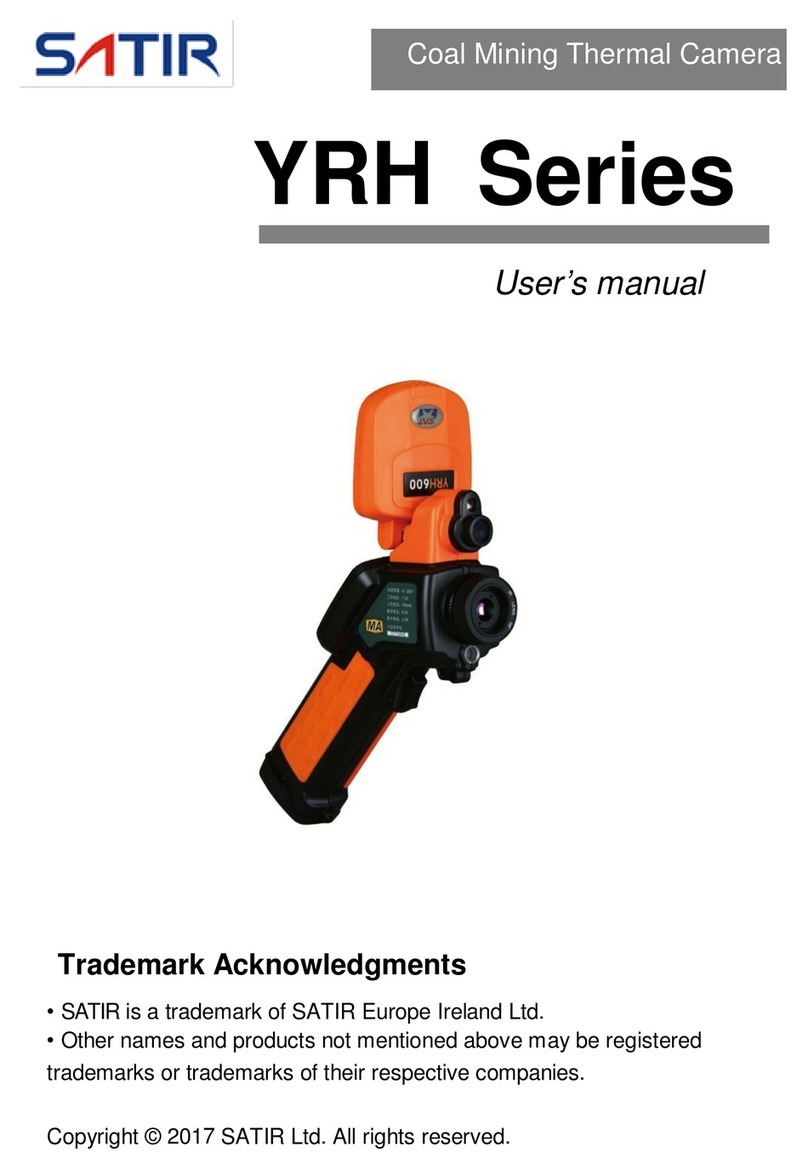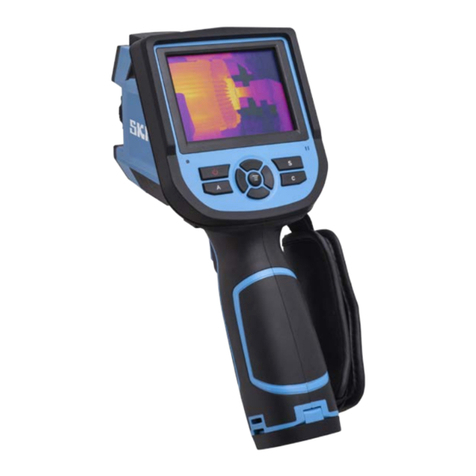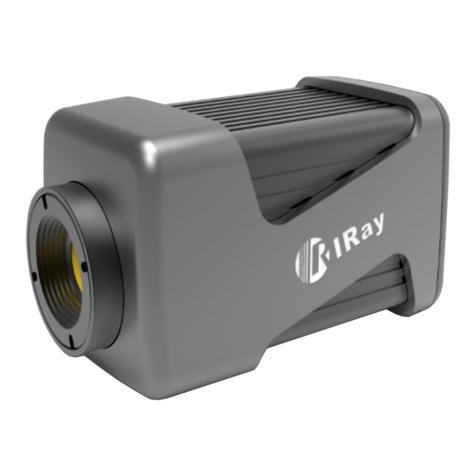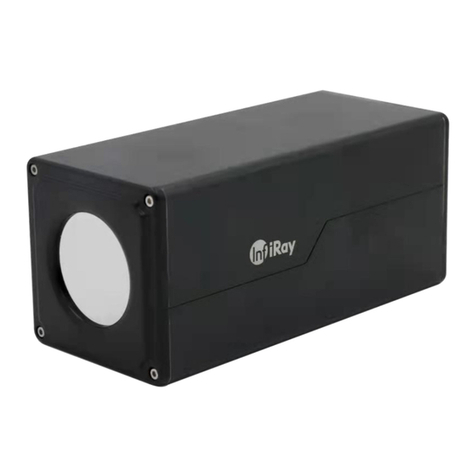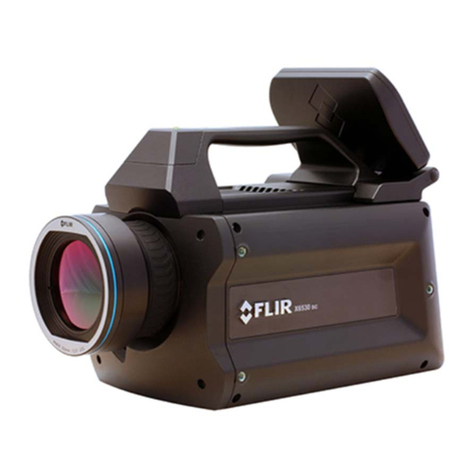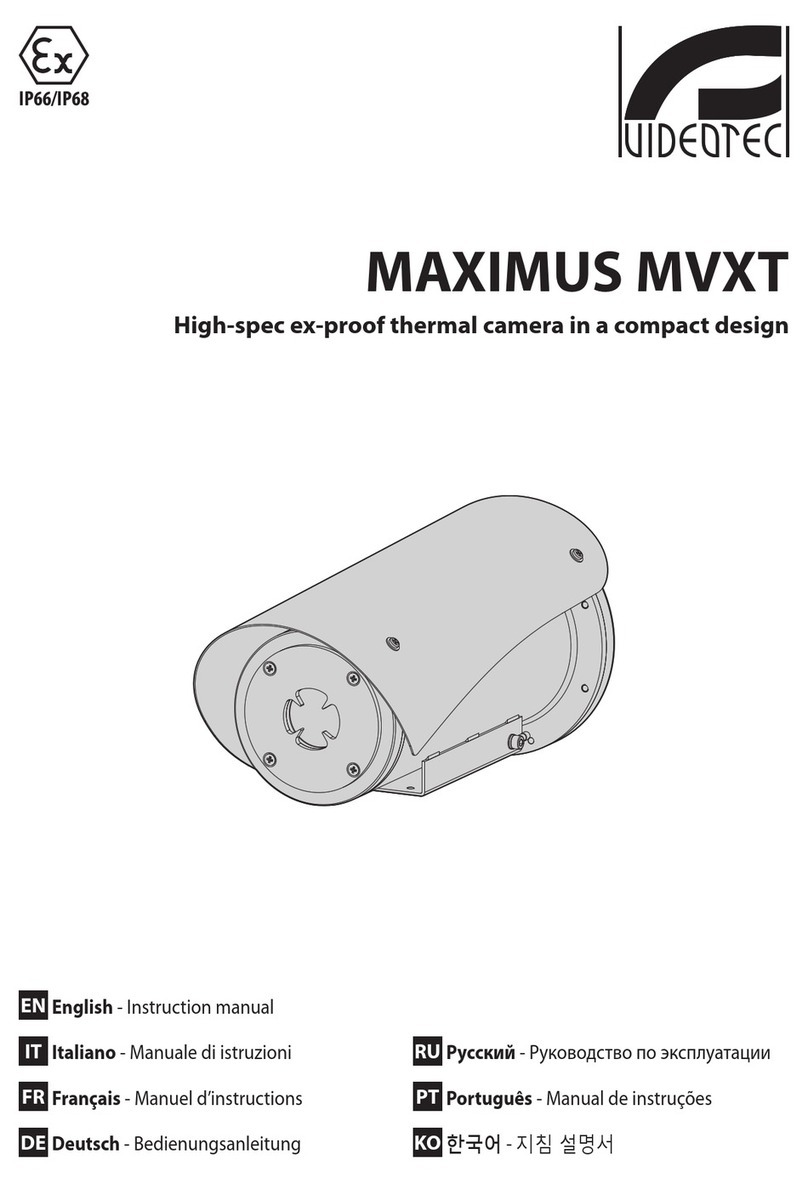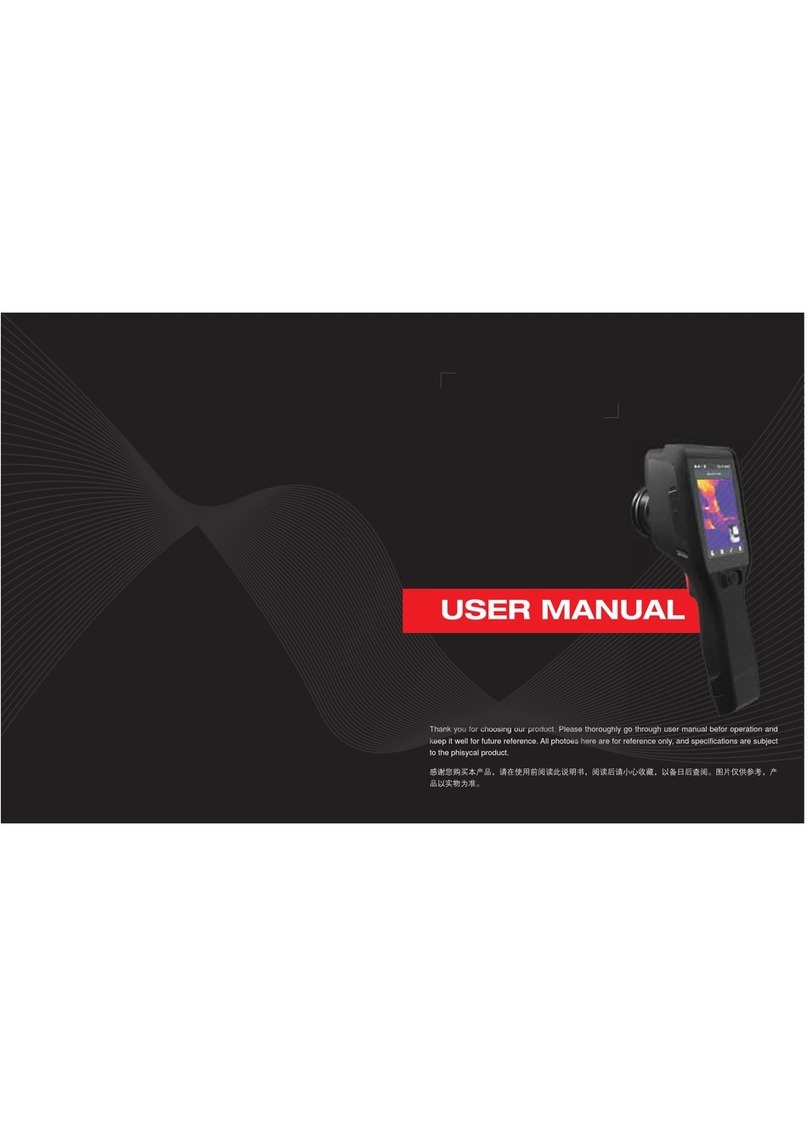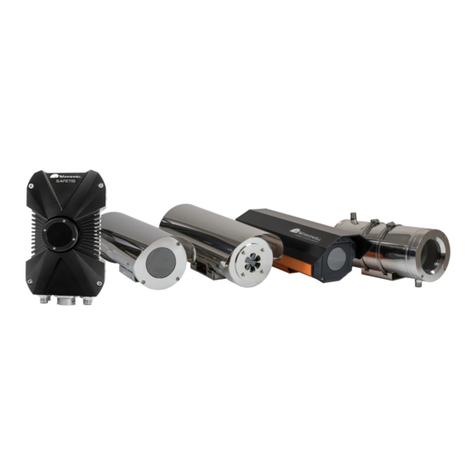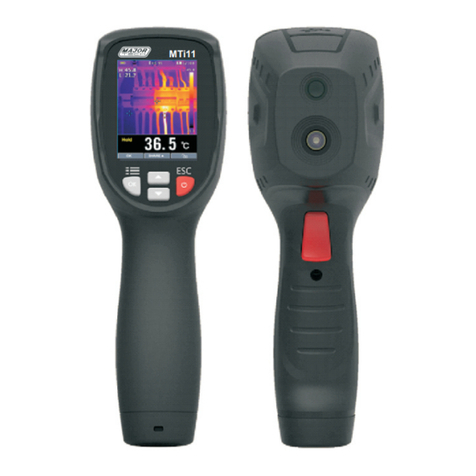
EN Electromagnetic compatibility. This product complies with the requirements of
European standard EN 55032: 2015, Class A.
Caution: Operating this product in a residential area may cause radio interference.
Attention! A license is required for Thermal Imaging Front Attachment Proton FXQ30
when exporting outside your country.
This product is subject to change in line with improvements to its design.
The current version of the User’s Manual can be found on the website
www.pulsar-vision.com
FR Compatibilité électromagnétique. Ce produit est conforme aux exigences de la
norme européenne EN 55032: 2015, classe A.
Attention: L’utilisation de ce produit dans une zone résidentielle peut provoquer des
interférences radio.
Attention! Les modules d’imagerie thermique Proton FXQ30 nécessitent l’obtention
d’une licence s’ils sont exportés hors de votre pays.
La conguration peut être modiée an d’améliorer l’utilisation de l’appareil.
La version actuelle du manuel d’utilisation est disponible sur le site
www.pulsar-vision.com
DE Elektromagnetische Verträglichkeit. Dieses Produkt entspricht den Anforderungen
der Europäischen Norm EN 55032:2015, Klasse A.
Achtung: Der Betrieb dieses Produktes in Wohngebieten kann Funkstörungen
verursachen.
Achtung! Die Wärmebildvorsatzgeräte Proton FXQ30 erfordern eine Lizenz, wenn sie
über die Grenzen Ihres Landes exportiert werden.
Änderungen im Design zwecks höherer Gebrauchseigenschaften des Produktes
vorbehalten.
Die aktuelle Version der Bedienungsanleitung nden Sie unter www.pulsar-vision.com
ES Compatibilidad electromagnética. Este producto cumple con los requisitos de la
norma europea EN 55032:2015, Clase A.
Advertencia: el uso de este producto en la zona residencial puede provocar
interferencias de radiofrecuencia.
¡Atención! Los visores acoplables de imagen térmica Proton FXQ30 requieren una
licencia si se exportan fuera de su país de usted.
El diseño de este producto está sujeto a modicaciones con el n de mejorar sus
características de uso.
Encontrará la última edición del manual de usuario en el sitio web
www.pulsar-vision.com
IT Compatibilità elettromagnetica. Questo prodotto è conforme ai requisiti della
norma europea EN 55032:2015, Classe A.
Attenzione: l’uso di questo prodotto in un’area residenziale può causare dei
radiodisturbi.
Attenzione! E’ necessaria una licenza per dispositivo frontale a visione termica
Proton FXQ30 nel caso in cui lo si portasse all’estero.
Per migliorare le proprietà del prodotto nella sua costruzione possono essere
apportate delle modiche.
La versione aggiornata delle istruzioni d’uso è disponibile sul sito
www.pulsar-vision.com
RU Электромагнитная совместимость. Данный продукт соответствует требованиям
европейского стандарта EN 55032:2015, Класс А.
Внимание: эксплуатация данного продукта в жилой зоне может создавать
радиопомехи.
Внимание! Тепловизионные насадки Proton FXQ30 требуют лицензии, если они
экспортируются за пределы Вашей страны.
Для улучшения потребительских свойств изделия в его конструкцию могут
вноситься усовершенствования.
Актуальную версию инструкции по эксплуатации Вы можете найти на сайте
www.pulsar-vision.com
